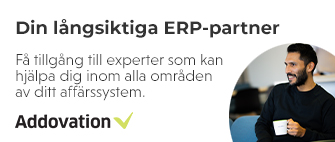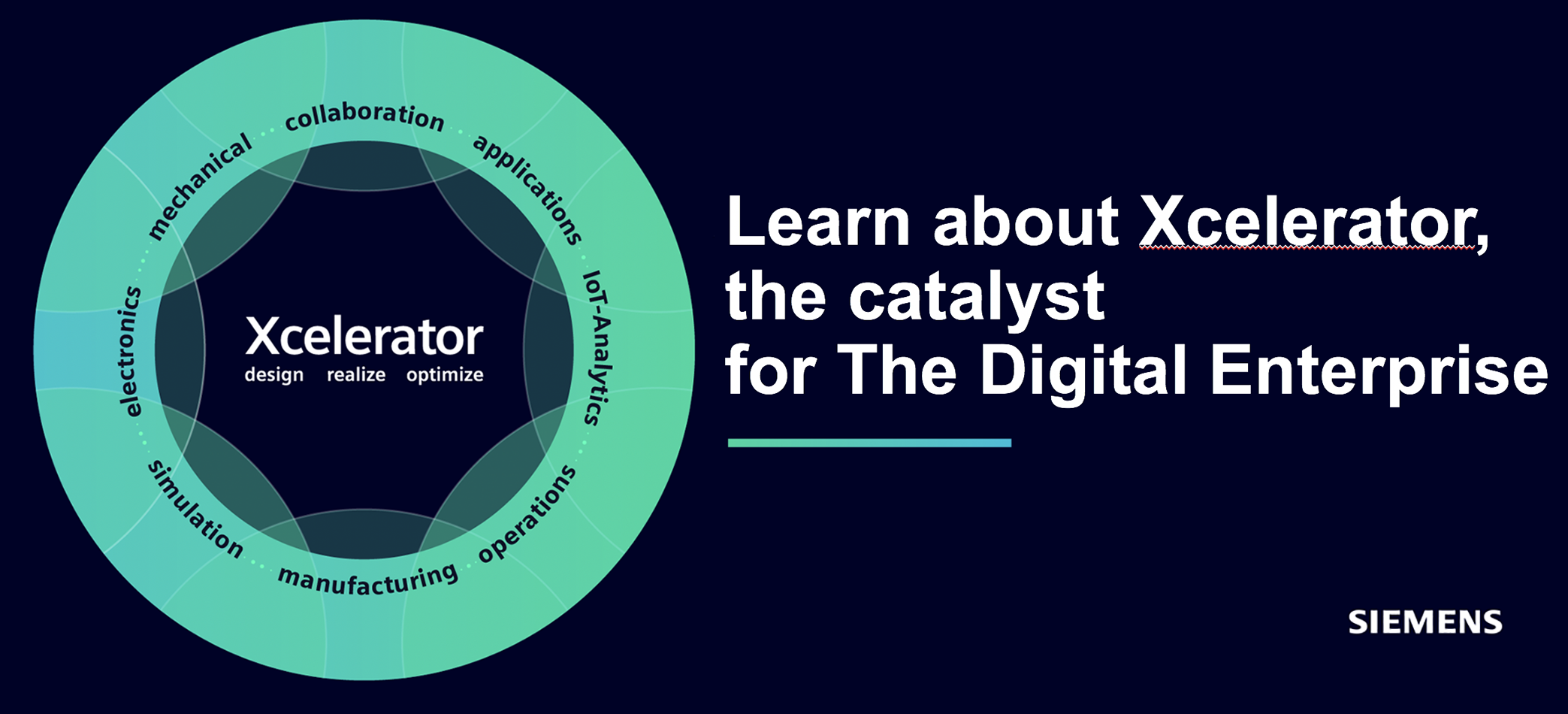HÄR ÄR DE SENASTE NYHETERNA
Siemens $5.1 Billion Bet on Buying Dotmatics: ”Scaling Up PLM on a Market With...
“MAKING COMPETITION much TOUGHER for Dassault and Aras in Life Sciences.”
For the second time in six months, Siemens announced this week a new giant acquisition with strong connections to PLM: The company is buying the American developer of R&D software in medicine, chemistry, bio sciences and materials technology, Dotmatics, for $5.1 billion. The acquisition signals a major investment in expanding Siemens' already strong position in the PLM area and related R&D in a number of heavy industrial segments such as automotive, aerospace and defense, electronics, and the like, towards the commercially gigantic Life Sciences area.
The investments over the past six months indicate a market offensive of major proportions: This purchase alone and the investment in Altair (AI, HPC and Simulation & Analysis) has cost $15.7 billion.
In the press material about the Dotmatics acquisition, Siemens CEO Roland Busch stated that Life Sciences offers an attractive complementary opportunity in the software market and pointed out that it expands Siemens' total addressable market for industrial software by $11 billion. This potential has already been exploited by Siemens' toughest competitor in the PLM arena, Dassault Systemes in particular, but also by Aras PLM, however Roland Busch, PLM chief Tony Hemmelgarn and the coworkers in the PLM division are seriously going after the great commercial opportunities that lie within the sector.
"The acquisition strengthens our strategic position in Life Sciences and creates a world-leading AI-driven PLM software portfolio, this as part of Siemens Xcelerator. AI has emerged as a transformative force in various industries, and its application in Life Sciences is becoming increasingly important," says Busch.
And of course, the R&D area and what AI can do in terms of medicine and life sciences is very attractive, but it is perhaps just as interesting that the pharmaceutical manufacturing linked to R&D work is currently actually considered by analysts to be a bit neglected compared to what has happened in, for example, automotive, electronics and similar segments where Siemens, Altair included, is one of the market dominants in terms of PLM, AI and automation. The players in pharmaceutical development – those who have succeeded – have earned so much money that they have often become stuck in a kind of mild passivity when it comes to investments in efficient manufacturing. They have continued to work in their more transaction-based and expensive ERP environments; the big money has come in anyway, without having to think about what has been considered marginal parts, such as sharpening the production equipment. But pharmaceutical development is incredibly complex, with many phases that often drag on for decades before you have an approved preparation. But then the whole thing has to be scaled up, in many cases globally. In this sequence, there is a great commercial potential for players who are sitting on cutting-edge technology and holistically connected software portfolios, such as Xcelerator. How so? A recent survey conducted by AMR Research showed that 31% of manufacturers in the life sciences industry are already using PLM software to accelerate innovation and to design products. Even more promising from Siemens' point of view, however, is that 55% are now evaluating PLM software.
Click on the link to read more on PLM&ERP News.
The investments over the past six months indicate a market offensive of major proportions: This purchase alone and the investment in Altair (AI, HPC and Simulation & Analysis) has cost $15.7 billion.
In the press material about the Dotmatics acquisition, Siemens CEO Roland Busch stated that Life Sciences offers an attractive complementary opportunity in the software market and pointed out that it expands Siemens' total addressable market for industrial software by $11 billion. This potential has already been exploited by Siemens' toughest competitor in the PLM arena, Dassault Systemes in particular, but also by Aras PLM, however Roland Busch, PLM chief Tony Hemmelgarn and the coworkers in the PLM division are seriously going after the great commercial opportunities that lie within the sector.
"The acquisition strengthens our strategic position in Life Sciences and creates a world-leading AI-driven PLM software portfolio, this as part of Siemens Xcelerator. AI has emerged as a transformative force in various industries, and its application in Life Sciences is becoming increasingly important," says Busch.
And of course, the R&D area and what AI can do in terms of medicine and life sciences is very attractive, but it is perhaps just as interesting that the pharmaceutical manufacturing linked to R&D work is currently actually considered by analysts to be a bit neglected compared to what has happened in, for example, automotive, electronics and similar segments where Siemens, Altair included, is one of the market dominants in terms of PLM, AI and automation. The players in pharmaceutical development – those who have succeeded – have earned so much money that they have often become stuck in a kind of mild passivity when it comes to investments in efficient manufacturing. They have continued to work in their more transaction-based and expensive ERP environments; the big money has come in anyway, without having to think about what has been considered marginal parts, such as sharpening the production equipment. But pharmaceutical development is incredibly complex, with many phases that often drag on for decades before you have an approved preparation. But then the whole thing has to be scaled up, in many cases globally. In this sequence, there is a great commercial potential for players who are sitting on cutting-edge technology and holistically connected software portfolios, such as Xcelerator. How so? A recent survey conducted by AMR Research showed that 31% of manufacturers in the life sciences industry are already using PLM software to accelerate innovation and to design products. Even more promising from Siemens' point of view, however, is that 55% are now evaluating PLM software.
Click on the link to read more on PLM&ERP News.
Siemens köp av Dotmatics för 50 miljarder: ”Skalar upp PLM på en marknad med...
TUFFAR TILL KONKURRENSLÄGET inom Life Sciences för DASSAULT, ARAS PLM och PTC. För andra gången på ett halvår tillkännagav Siemens i veckan ett nytt jätteförvärv med starka kopplingar till PLM-sidan: Bolaget köper amerikanska utvecklaren av FoU-programvara inom medicin-, kemi-, biovetenskap och materialteknik, Dotmatics, för 5,1 miljarder dollar (ca 50 miljarder kronor). Förvärvet signalerar en storsatsning på att expandera Siemens redan starka ställning på PLM-området och relaterad FoU inom en rad tunga industrisegment som automotive, flyg och försvar, high-tech elektronik, och liknande, mot det kommersiellt gigantiska Life Sciences-området.
Investeringarna under senaste halvåret indikerar på en marknadsoffensiv av stora mått: Bara detta köp och satsningen på Altair inom AI, HPC och Simulering & Analys, som blev helt klart under förra veckan, har gått loss på 15,7 miljarder dollar, motsvarande runt 151 miljarder kronor.
I pressmaterialet kring Dotmatics-förvärvet konstaterade Siemens-chefen, Roland Busch, att Life Sciences erbjuder en attraktiv kompletterande möjlighet på mjukvarumarknaden och pekade på att det utökar Siemens totala adresserbara marknad för industriell mjukvara med 11 miljarder dollar. Denna potential har framför allt Siemens tuffaste konkurrent på PLM-arenan, Dassault Systemes, upptäckt sedan tidigare, men nu går koncernchefen, Roland Busch, PLM-basen Tony Hemmelgarn och medarbetarna inom PLM-divisionen, på allvar efter de stora kommersiella möjligheter som döljer sig inom sektorn.
"Ja, köpet stärker vår strategiska position inom Life Sciences och skapar en världsledande AI-driven PLM-programvaru-portfölj, detta som en del av Siemens Xcelerator. AI har i högsta grad dykt upp som en transformativ kraft inom olika branscher, och dess tillämpning inom Life Sciences blir allt viktigare", säger Busch.
Och visst, FoU-området och vad AI kan göra är när det gäller medicin- och biovetenskap är mycket attraktivt, men möjligen är det lika intressant att den till FoU-arbetet kopplade medicintillverkningen i dagsläget faktiskt bland analytiker betraktas som lite eftersatt jämfört med vad som hänt inom t ex automotive, elektronik och liknande segment där Siemens, Altair inkluderat, är en av marknadsdominanterna gällande PLM, AI och automation. Aktörerna inom medicinutveckling – de som lyckats – har tjänat så stora pengar att de ofta fastnat i någon slags lättare passivitet när det gäller investeringarna i effektiv tillverkning. Man har fortsatt jobba i sina mer transaktionsbaserade och dyra ERP-miljöer; de stora pengarna har ju kommit in ändå, utan att man behövt fundera på vad som betraktats som marginella bitar, typ att vässa produktionsapparaterna. Men medicinutveckling är oehört komplext, med många faser som ofta drar ut över decennier, innan man har ett godkänt preparat. Men då ska det hela skalas upp, i många fall globalt, vad händer då?
I denna sekvens finns en enorm kommersiell potential för spelare som sitter på vass teknologi och holistiskt kopplade mjukvaruportföljer, typ Xcelerator. Hur då? En nyligen genomförd undersökning gjord av AMR Research visade att 31 % av tillverkarna inom biovetenskapsindustrin redan använder PLM-programvara för att påskynda innovation och för att designa produkter. Än mer lovande ur Siemens synvinkel är dock att 55 % nu utvärderar PLM-mjukvara.
En annan marknadseffekt är att köpet tuffar till konkurrensläget inom Life Sience-relaterat PLM-stöd för Dassault, Aras PLM och PTC, som alla tre har tagit positioner på området.
Klicka på rubriken för att läsa mer på PLM&ERP News.
Investeringarna under senaste halvåret indikerar på en marknadsoffensiv av stora mått: Bara detta köp och satsningen på Altair inom AI, HPC och Simulering & Analys, som blev helt klart under förra veckan, har gått loss på 15,7 miljarder dollar, motsvarande runt 151 miljarder kronor.
I pressmaterialet kring Dotmatics-förvärvet konstaterade Siemens-chefen, Roland Busch, att Life Sciences erbjuder en attraktiv kompletterande möjlighet på mjukvarumarknaden och pekade på att det utökar Siemens totala adresserbara marknad för industriell mjukvara med 11 miljarder dollar. Denna potential har framför allt Siemens tuffaste konkurrent på PLM-arenan, Dassault Systemes, upptäckt sedan tidigare, men nu går koncernchefen, Roland Busch, PLM-basen Tony Hemmelgarn och medarbetarna inom PLM-divisionen, på allvar efter de stora kommersiella möjligheter som döljer sig inom sektorn.
"Ja, köpet stärker vår strategiska position inom Life Sciences och skapar en världsledande AI-driven PLM-programvaru-portfölj, detta som en del av Siemens Xcelerator. AI har i högsta grad dykt upp som en transformativ kraft inom olika branscher, och dess tillämpning inom Life Sciences blir allt viktigare", säger Busch.
Och visst, FoU-området och vad AI kan göra är när det gäller medicin- och biovetenskap är mycket attraktivt, men möjligen är det lika intressant att den till FoU-arbetet kopplade medicintillverkningen i dagsläget faktiskt bland analytiker betraktas som lite eftersatt jämfört med vad som hänt inom t ex automotive, elektronik och liknande segment där Siemens, Altair inkluderat, är en av marknadsdominanterna gällande PLM, AI och automation. Aktörerna inom medicinutveckling – de som lyckats – har tjänat så stora pengar att de ofta fastnat i någon slags lättare passivitet när det gäller investeringarna i effektiv tillverkning. Man har fortsatt jobba i sina mer transaktionsbaserade och dyra ERP-miljöer; de stora pengarna har ju kommit in ändå, utan att man behövt fundera på vad som betraktats som marginella bitar, typ att vässa produktionsapparaterna. Men medicinutveckling är oehört komplext, med många faser som ofta drar ut över decennier, innan man har ett godkänt preparat. Men då ska det hela skalas upp, i många fall globalt, vad händer då?
I denna sekvens finns en enorm kommersiell potential för spelare som sitter på vass teknologi och holistiskt kopplade mjukvaruportföljer, typ Xcelerator. Hur då? En nyligen genomförd undersökning gjord av AMR Research visade att 31 % av tillverkarna inom biovetenskapsindustrin redan använder PLM-programvara för att påskynda innovation och för att designa produkter. Än mer lovande ur Siemens synvinkel är dock att 55 % nu utvärderar PLM-mjukvara.
En annan marknadseffekt är att köpet tuffar till konkurrensläget inom Life Sience-relaterat PLM-stöd för Dassault, Aras PLM och PTC, som alla tre har tagit positioner på området.
Klicka på rubriken för att läsa mer på PLM&ERP News.
ABB’s New Generative AI, Industrial Knowledge Vault:“Like A Bridge Over Troubled Water”
ABB and MICROSOFT develop GENERATIVE AI solution that ensures operational continuity when key employees retire or leave.
Generative AI to transform how information is preserved and shared, thus enabling smarter, faster and more sustainable decision-making – could this be a solution to a not-so-uncommon industrial problem? ABB’s experts, together with Microsoft, have thought and acted on the matter and created a solution, Ability Industrial Knowledge Vault, that addresses a growing challenge in many industrial environments: knowledge loss. Why is this so interesting?
For several reasons, not least in the perspective that when experienced employees retire or leave, the loss of decades of collective knowledge threatens operational continuity, efficiency and innovation if not addressed properly. Traditional documentation methods are often fragmented, requiring significant manual effort to compile, interpret and apply. In this, ABB’s new Ability family solution can act as, “a bridge over murky waters.”
“Industries everywhere are facing a critical knowledge gap as a generation of experienced workers retire, taking their invaluable expertise with them,” says ABB’s Sanjit Shewale, Global Head of Digital, Process Industries. “Our Industrial Knowledge Vault addresses this challenge head-on by providing a secure and accessible platform to enable businesses to do more digitally. By capturing, preserving, and sharing this critical knowledge, companies can ensure business continuity and provide workforces with timely information to do their jobs smarter, faster, and more sustainably.”
Powered by Microsoft Azure OpenAI Service, this Ability family’s Industrial Knowledge Vault can store, retain, and protect critical expertise while actively transforming that knowledge into step-by-step workflows. This enables workers to quickly access and apply best practices, enabling businesses to run more smoothly while maintaining secure operations.
The solution captures and structures expertise in a centralized, secure repository, easily accessible through natural language conversations, enabling engineers and operators to perform tasks more efficiently. To that end, Industrial Knowledge Vault uses ABB Genix CoPilot and Microsoft Azure OpenAI Service to analyze and synthesize information into actionable procedures, allowing workers to effortlessly retrieve insights through an intuitive, conversational interface.
Click on the headline to read more on PLM&ERP News.
Generative AI to transform how information is preserved and shared, thus enabling smarter, faster and more sustainable decision-making – could this be a solution to a not-so-uncommon industrial problem? ABB’s experts, together with Microsoft, have thought and acted on the matter and created a solution, Ability Industrial Knowledge Vault, that addresses a growing challenge in many industrial environments: knowledge loss. Why is this so interesting?
For several reasons, not least in the perspective that when experienced employees retire or leave, the loss of decades of collective knowledge threatens operational continuity, efficiency and innovation if not addressed properly. Traditional documentation methods are often fragmented, requiring significant manual effort to compile, interpret and apply. In this, ABB’s new Ability family solution can act as, “a bridge over murky waters.”
“Industries everywhere are facing a critical knowledge gap as a generation of experienced workers retire, taking their invaluable expertise with them,” says ABB’s Sanjit Shewale, Global Head of Digital, Process Industries. “Our Industrial Knowledge Vault addresses this challenge head-on by providing a secure and accessible platform to enable businesses to do more digitally. By capturing, preserving, and sharing this critical knowledge, companies can ensure business continuity and provide workforces with timely information to do their jobs smarter, faster, and more sustainably.”
Powered by Microsoft Azure OpenAI Service, this Ability family’s Industrial Knowledge Vault can store, retain, and protect critical expertise while actively transforming that knowledge into step-by-step workflows. This enables workers to quickly access and apply best practices, enabling businesses to run more smoothly while maintaining secure operations.
The solution captures and structures expertise in a centralized, secure repository, easily accessible through natural language conversations, enabling engineers and operators to perform tasks more efficiently. To that end, Industrial Knowledge Vault uses ABB Genix CoPilot and Microsoft Azure OpenAI Service to analyze and synthesize information into actionable procedures, allowing workers to effortlessly retrieve insights through an intuitive, conversational interface.
Click on the headline to read more on PLM&ERP News.
ABBs nya generativa AI, Industrial Knowledge Vault: “Like A Bridge Over Troubled Water”
ABB och MICROSOFT tar fram GENERATIV AI-lösning som säkerställer operativ driftskontinuitet när nyckelmedarbetare slutar eller går i pension. Generativ AI för att transformera hur information bevaras och delas, för att på så vis möjliggöra smartare, snabbare och mer hållbart beslutsfattande – kan det vara något? Verkstadskoncernen ABBs experter har tillsammans med Microsoft funderat och agerat på saken och skapat en lösning, Ability Industrial Knowledge Vault, som tar itu med en växande utmaning i många industriella miljöer: kunskapsförlust. Varför är detta så intressant?
Av flera skäl, inte minst i perspektiv av att när erfarna medarbetare går i pension eller slutar, hotar förlusten av decennier av kollektiv kunskap operativ kontinuitet, effektivitet och innovation om de inte åtgärdas på rätt sätt. Traditionella dokumentationsmetoder är ofta fragmenterade, vilket kräver betydande manuell ansträngning för att sammanställa, tolka och tillämpa. I detta kan ABBs Ability-famlijs nya lösning fungera som, ”en bro över mörka vatten.”
"Branscher överallt står inför en kritisk kunskapslucka när en generation av erfarna arbetare går i pension och tar med sig sin ovärderliga expertis", säger ABBs Sanjit Shewale, Global Head of Digital, Process Industries. "Vårt Industrial Knowledge Vault tar sig an den här utmaningen direkt genom att tillhandahålla en säker och tillgänglig plattform för att göra det möjligt för företag att göra mer med digitalt. Genom att fånga, bevara och dela denna viktiga kunskap kan företag säkerställa driftkontinuitet och ge arbetsstyrkor aktuell information för att utföra sina jobb smartare, snabbare och mer hållbart."
Med hjälp av Microsoft Azure OpenAI Service, kan detta Ability-familjens Industrial Knowledge Vault lagra, behålla och skydda kritisk expertis samtidigt som den aktivt omvandlar den kunskapen till steg-för-steg-arbetsflöden. Detta gör det möjligt för arbetare att snabbt komma åt och tillämpa bästa praxis, vilket gör det möjligt för företag att köra smidigare samtidigt som de bevarar säkra verksamheter.
Lösningen fångar och strukturerar expertis i ett centraliserat, säkert förråd, som är lättillgängligt genom naturliga språkkonversationer, vilket gör det möjligt för ingenjörer och operatörer att utföra uppgifter mer effektivt. För ändamålet använder Industrial Knowledge Vault ABB Genix CoPilot och Microsoft Azure OpenAI Service för att analysera och syntetisera information till handlingsbara procedurer, vilket gör att arbetare kan hämta insikter utan ansträngning genom ett intuitivt, konversationsgränssnitt.
Av flera skäl, inte minst i perspektiv av att när erfarna medarbetare går i pension eller slutar, hotar förlusten av decennier av kollektiv kunskap operativ kontinuitet, effektivitet och innovation om de inte åtgärdas på rätt sätt. Traditionella dokumentationsmetoder är ofta fragmenterade, vilket kräver betydande manuell ansträngning för att sammanställa, tolka och tillämpa. I detta kan ABBs Ability-famlijs nya lösning fungera som, ”en bro över mörka vatten.”
"Branscher överallt står inför en kritisk kunskapslucka när en generation av erfarna arbetare går i pension och tar med sig sin ovärderliga expertis", säger ABBs Sanjit Shewale, Global Head of Digital, Process Industries. "Vårt Industrial Knowledge Vault tar sig an den här utmaningen direkt genom att tillhandahålla en säker och tillgänglig plattform för att göra det möjligt för företag att göra mer med digitalt. Genom att fånga, bevara och dela denna viktiga kunskap kan företag säkerställa driftkontinuitet och ge arbetsstyrkor aktuell information för att utföra sina jobb smartare, snabbare och mer hållbart."
Med hjälp av Microsoft Azure OpenAI Service, kan detta Ability-familjens Industrial Knowledge Vault lagra, behålla och skydda kritisk expertis samtidigt som den aktivt omvandlar den kunskapen till steg-för-steg-arbetsflöden. Detta gör det möjligt för arbetare att snabbt komma åt och tillämpa bästa praxis, vilket gör det möjligt för företag att köra smidigare samtidigt som de bevarar säkra verksamheter.
Lösningen fångar och strukturerar expertis i ett centraliserat, säkert förråd, som är lättillgängligt genom naturliga språkkonversationer, vilket gör det möjligt för ingenjörer och operatörer att utföra uppgifter mer effektivt. För ändamålet använder Industrial Knowledge Vault ABB Genix CoPilot och Microsoft Azure OpenAI Service för att analysera och syntetisera information till handlingsbara procedurer, vilket gör att arbetare kan hämta insikter utan ansträngning genom ett intuitivt, konversationsgränssnitt.
How the New ISO Standards Can Help Maintenance Practices Make Economic Sense
“INTEGRATION of ASSET MANAGEMENT with BUSINESS needs is AN AREA WHERE MAINTENANCE 5.0 models frequently FALL SHORT.” According to a survey by analyst IDC, increasing operational efficiency was the top priority for industrial organizations in 2022 (51%). It's reasonable to assume that this relationship is still largely true today, three years later. But it's also a clear indication that effective management of the lifecycle of assets–such as factory facilities, production lines, machinery, etc–is critical to maximizing the return on investment (ROI) in these valuable assets. A relevant concept in this context is Asset Lifecycle Management (ALM), which summarizes the process by which organizations keep their assets in top condition throughout their entire lifespan. This is done by combining a range of strategies designed to extend the life of an asset and increase its efficiency.
There are of course several ways to handle this, but a strong concept in this context is the ISO 55000 standard. In today's guest column on PLM&ERP News, Bas Beemsterboer, responsible for sales strategy at Hexagon's Asset Lifecycle Intelligence division, discusses around this.
As recently as last summer, the International Organization for Standardization (ISO) released new updates to the ISO 55000 series, a comprehensive set of standards for asset management. These standards offer guidance and requirements on the critical areas of value, organizational alignment, leadership, outcomes and benefits of asset management, and measurable improvement and maturity.
"There's a common misconception that ISO standards are designed only for large companies, specific industries, or compliance purposes. In reality, they provide a powerful framework that allows organizations to integrate asset management more effectively with their business needs – an area where "maintenance maturity" or "maintenance 5.0" models frequently fall short," Bas Beemsterboer notes. How then?
"The concept of 'maturity' itself can become a dead-end, causing maintenance teams to pursue maturity milestones that bring limited business value. For instance, maintenance teams may focus on KPIs that demonstrate maturity – like the percentage of preventive interventions – without aligning with the strategic concerns of a CFO or CEO," he writes.
Click on the headline to read the entire column on PLM&ERP News
There are of course several ways to handle this, but a strong concept in this context is the ISO 55000 standard. In today's guest column on PLM&ERP News, Bas Beemsterboer, responsible for sales strategy at Hexagon's Asset Lifecycle Intelligence division, discusses around this.
As recently as last summer, the International Organization for Standardization (ISO) released new updates to the ISO 55000 series, a comprehensive set of standards for asset management. These standards offer guidance and requirements on the critical areas of value, organizational alignment, leadership, outcomes and benefits of asset management, and measurable improvement and maturity.
"There's a common misconception that ISO standards are designed only for large companies, specific industries, or compliance purposes. In reality, they provide a powerful framework that allows organizations to integrate asset management more effectively with their business needs – an area where "maintenance maturity" or "maintenance 5.0" models frequently fall short," Bas Beemsterboer notes. How then?
"The concept of 'maturity' itself can become a dead-end, causing maintenance teams to pursue maturity milestones that bring limited business value. For instance, maintenance teams may focus on KPIs that demonstrate maturity – like the percentage of preventive interventions – without aligning with the strategic concerns of a CFO or CEO," he writes.
Click on the headline to read the entire column on PLM&ERP News












